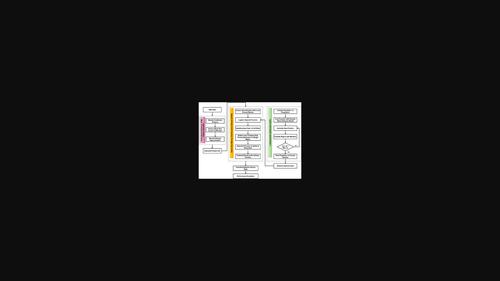当前位置:
X-MOL 学术
›
Int. J. Numer. Method. Biomed. Eng.
›
论文详情
Our official English website, www.x-mol.net, welcomes your feedback! (Note: you will need to create a separate account there.)
A novel finite spectral entropy: Gated term memory unit recursive network integrated with Ladybug Beetle Optimization algorithm for epileptic seizure detection
International Journal for Numerical Methods in Biomedical Engineering ( IF 2.1 ) Pub Date : 2023-09-23 , DOI: 10.1002/cnm.3769 Sandhya Kumari Golla 1 , Suman Maloji 1
International Journal for Numerical Methods in Biomedical Engineering ( IF 2.1 ) Pub Date : 2023-09-23 , DOI: 10.1002/cnm.3769 Sandhya Kumari Golla 1 , Suman Maloji 1
Affiliation

|
Professional medical experts use a visual electroencephalography (EEG) signal for epileptic seizure detection, although this method is time-consuming and highly subject to bias. The majority of previous epileptic detection techniques have poor efficiency, detection performance and also which are unsuited to handle large datasets. In order to solve the aforementioned issues and to assist medical professionals with an advanced technology, a computerized epileptic seizure detection system is essential. Therefore, the proposed work intends to design an automated detection tool for predicting an epileptic seizure from EEG signals. For this purpose, a novel non-linear feature analysis and deep learning algorithms are deployed in this work. Initially, the signal decomposition, filtering and artifacts removal operations are carried out with the use of finite Haar wavelet transformation technique. After that, the finite spectral entropy (FSE) based feature extraction model has been used to extract the time, frequency, and time-frequency features from the normalized signal. Consequently, the novel gated term memory unit recursive network (GTRN) model is employed to predict the given EEG signal as whether healthy or seizure affected including the class with high accuracy. During this process, the recently developed Ladybug Beetle Optimization (LBO) algorithm is used to compute the logistic sigmoid function based on the solution. The purpose of using this algorithm is to simplify the process of classification with increased seizure prediction accuracy and performance. Moreover, the standard and popular benchmark EEG datasets are used to validate and test the results of the proposed FSE-GTRN-LBO mechanism. By leveraging the finite Haar wavelet transformation and FSE-based feature extraction, we can efficiently process EEG signals. The utilization of the GTRN model enables accurate classification of healthy and seizure-affected EEG data. To optimize the classification process further, we integrate the LBO algorithm, streamlining the computation of the logistic sigmoid function. Through comprehensive validation on standard EEG datasets, our proposed FSE-GTRN-LBO mechanism achieves outstanding seizure prediction accuracy and performance, surpassing existing state-of-the-art techniques.
中文翻译:

一种新颖的有限谱熵:门控项记忆单元递归网络与瓢虫甲虫优化算法相结合,用于癫痫发作检测
专业医学专家使用视觉脑电图 (EEG) 信号来检测癫痫发作,尽管这种方法非常耗时且容易产生偏差。以往的癫痫检测技术大多效率低、检测性能差,且不适合处理大数据集。为了解决上述问题并以先进技术协助医疗专业人员,计算机化癫痫发作检测系统是必不可少的。因此,拟议的工作旨在设计一种自动检测工具,用于根据脑电图信号预测癫痫发作。为此,本工作部署了一种新颖的非线性特征分析和深度学习算法。最初,使用有限哈尔小波变换技术进行信号分解、滤波和伪影去除操作。之后,使用基于有限谱熵(FSE)的特征提取模型从归一化信号中提取时间、频率和时频特征。因此,采用新颖的门控术语记忆单元递归网络(GTRN)模型来预测给定的脑电图信号,无论是健康还是癫痫发作,包括高精度的类别。在此过程中,使用最近开发的瓢虫甲虫优化(LBO)算法来计算基于解的逻辑S形函数。使用该算法的目的是简化分类过程,提高癫痫预测的准确性和性能。此外,标准和流行的基准脑电图数据集用于验证和测试所提出的 FSE-GTRN-LBO 机制的结果。 通过利用有限哈尔小波变换和基于 FSE 的特征提取,我们可以有效地处理脑电信号。 GTRN 模型的利用可以对健康和受癫痫影响的脑电图数据进行准确分类。为了进一步优化分类过程,我们集成了 LBO 算法,简化了逻辑 sigmoid 函数的计算。通过对标准脑电图数据集的全面验证,我们提出的 FSE-GTRN-LBO 机制实现了出色的癫痫预测准确性和性能,超越了现有的最先进技术。
更新日期:2023-09-23
中文翻译:

一种新颖的有限谱熵:门控项记忆单元递归网络与瓢虫甲虫优化算法相结合,用于癫痫发作检测
专业医学专家使用视觉脑电图 (EEG) 信号来检测癫痫发作,尽管这种方法非常耗时且容易产生偏差。以往的癫痫检测技术大多效率低、检测性能差,且不适合处理大数据集。为了解决上述问题并以先进技术协助医疗专业人员,计算机化癫痫发作检测系统是必不可少的。因此,拟议的工作旨在设计一种自动检测工具,用于根据脑电图信号预测癫痫发作。为此,本工作部署了一种新颖的非线性特征分析和深度学习算法。最初,使用有限哈尔小波变换技术进行信号分解、滤波和伪影去除操作。之后,使用基于有限谱熵(FSE)的特征提取模型从归一化信号中提取时间、频率和时频特征。因此,采用新颖的门控术语记忆单元递归网络(GTRN)模型来预测给定的脑电图信号,无论是健康还是癫痫发作,包括高精度的类别。在此过程中,使用最近开发的瓢虫甲虫优化(LBO)算法来计算基于解的逻辑S形函数。使用该算法的目的是简化分类过程,提高癫痫预测的准确性和性能。此外,标准和流行的基准脑电图数据集用于验证和测试所提出的 FSE-GTRN-LBO 机制的结果。 通过利用有限哈尔小波变换和基于 FSE 的特征提取,我们可以有效地处理脑电信号。 GTRN 模型的利用可以对健康和受癫痫影响的脑电图数据进行准确分类。为了进一步优化分类过程,我们集成了 LBO 算法,简化了逻辑 sigmoid 函数的计算。通过对标准脑电图数据集的全面验证,我们提出的 FSE-GTRN-LBO 机制实现了出色的癫痫预测准确性和性能,超越了现有的最先进技术。



























 京公网安备 11010802027423号
京公网安备 11010802027423号